Essential Fat-Soluble Vitamins for Dogs was updated in January 2020 to add additional details about Fibrous Osteodystrophy to the fat-soluble vitamins for dogs, vitamin D tab.
• Fat-soluble vitamins are A, D, E, and K. These vitamins are digested and absorbed using similar mechanisms as dietary lipids. The metabolites are excreted in a dog’s feces via bile.
• Fat-soluble vitamins can be stored in the body (e.g., liver). As such, toxicity is possible.
• Maximum recommendations are provided for vitamins A and D.
• Vitamins are expressed in various units of measurement with IU, mcg, and mg being the most common. The precise measure of one IU differs from vitamin to vitamin.
Glossary:
IU, International Unit • RE, Retinol Equivalent • RA, Retinol Activity • RAE, Retinol Activity Equivalent • mcg, Microgram • mg, Milligram • g, Gram
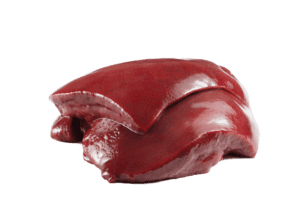
VITAMIN A
FAT SOLUBLE
Many Forms
Retinol (most biologically active), retinal, retinyl esters; retinoic acid.
Animal sourced vitamin A such as in liver is preformed/retinol.
Sources
Fish liver oils, egg yolk, and animal liver are rated as rich sources, but not if the animal from which they came was fed a vitamin A-deficient diet for an extended period.
Primary Roles in the Body
Vision
Tooth and bone growth
Reproduction
Maintenance of epithelial tissues
*Skin; mucous membranes in the gut and respiratory tract
Immune function
Proliferation and differentiation of cells
Precursors
Can be metabolized into vitamin A
Plant carotenoids
β-carotene (Dogs can utilize)
*Conversion of β-carotene
From IU to mcg: IU/1.66 = mcg
From mcg to IU: mcg * 1.66 = IU
β-carotene considered to have a low toxicity
High concentrations of β-carotene:
Carrots
Pumpkin
Sweet potato
Almost all the carotene is cleaved in the intestine
Signs of Deficiency
Impaired growth
Reproductive failure
Poor epithelial integrity
Dermatoses
Signs of Preformed Vitamin A Toxicity
Deforming cervical spondylosis
*200−800 times requirement for 4−24 weeks
VITAMIN D
FAT SOLUBLE
Two Pro-Vitamin Forms
Cholecalciferol (D3- animals)
Ergocalciferol (D2- plants)
inactive, must be hydrolyzed.
Sources
Oily/Fatty fish, egg yolk, some fish liver oils, and liver.
*Liver should not be used as a primary source of vitamin D in the diet as it will elevate levels of other nutrients (such as vitamin A) in excess. Some animal livers do not offer as much vitamin D as other.
Primary Roles in the Body
Vitamin D’s functions are intricately involved with normal calcium and phosphorus homeostasis in the body. At the site of the intestine, vitamin D stimulates the synthesis of calcium-binding protein, which is needed for efficient absorption of dietary calcium & phosphorus. Vitamin D affects normal bone growth & calcification by acting with Parathyroid Hormone (PHT) to mobilize calcium from bone and by causing an increase in phosphate reabsorption in the kidneys.
Dogs need to be fed Vitamin D in their diet
Signs of Deficiency
Rickets
Osteomalacia
Nutritional Secondary-Hyperparathyroidism
*Fibrous Osteodystrophy
*Dogs fed predominantly ratio diets without vitamin D supplements develop fibrous osteodystrophy rather than rickets, owing to nutritional secondary hyperparathyroidism
Signs of Toxicity
Hypercalcemia
Hyperphosphatemia
*Soft Tissue Mineralization
*Soft tissue mineralization secondary to persistent hypercalcemia and hyperphosphatemia.
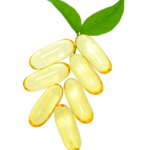
VITAMIN E
FAT SOLUBLE
Many Forms
Vitamin E is a group of eight fat soluble compounds that include four tocopherols and four tocotrienols. D-Alpha-tocopherol is the most biologically active of these compounds.
Sources
High amounts of Alpha-tocopherol are found in wheatgerm oil, safflower oil and sunflower oil.
Primary Roles in the Body
Acts as an antioxidant in plasma, red blood cells, and tissues
Scavenges free radicals that are generated in the body by several processes: energy metabolism, detoxification,
biosynthesis, etc.
Vitamin E has high lipid solubility, allowing its presence in membrane bilayer rich
in PUFA
Prostaglandin synthesis
Regulation of protein kinase activity
Dietary Requirement Dependents
Rate of free radical production
PUFA composition of membranes/diet
Presence of other protective nutrients (e.g., Selenium)
Signs of Deficiency
Reproductive failure
Pansteatitis
*State in which PUFA in body are oxidized
*Inflammation of adipose tissue
Clinical Signs of Deficiency
Depression
Anorexia
Painful thorax and abdomen
Signs of Toxicity
Interference with vitamin A, D, and K absorption and metabolism
 VITAMIN K
VITAMIN K
FAT SOLUBLE
Many Forms
Phylloquinone (K1)
Menaquinone (K2)
Menadione (K3)
The two major natural sources of vitamin K are phylloquinones (vitamin K1) in plant sources and menaquinones (vitamin K2) produced by bacterial flora.
Dogs can synthesis vitamin K in the intestinal by microbiota
Sources
Liver, some fish, green leafy vegetables.
Primary Roles in the Body
Important for blood clotting
Signs of Deficiency
Increased blood clotting time
Hemorrhage
Signs of Toxicity
None on record
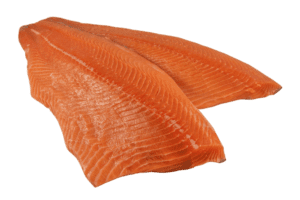
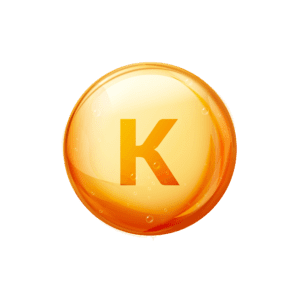
Amy, you website is amazing! I’ve learned so much from you and thanks to you, I feel confident on how to provide the best nutritionally sound diet for my dog.
Thank you so much, Sharon!
Thank you for this!